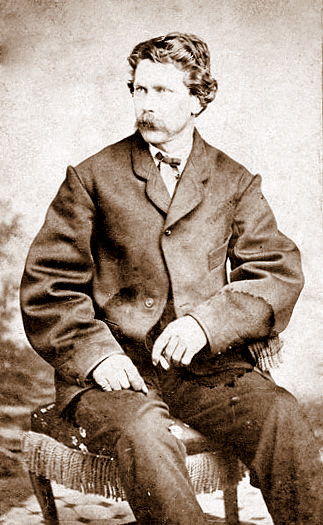The first school to have this program I found was USC Dornsife, they offer a Masters of Visual Anthropology and also a Doctor of Philosophy in Anthropology.
The Masters program is "an intensive one year program combining academic coursework and hands-on training in ethnographic documentary techniques, including researching, shooting, and editing a documentary (usually 20 to 30 minutes long) using digital media. The program is offered in collaboration with the Institute for Multimedia Literacy at the USC School of Cinematic Arts (Dornsife)".
The MA in Visual Anthropology is new to USC Dornsife. USC has a 25-year tradition of ethnographic documentary production, with over 60 documentaries produced by students and over 20 by faculty, this new program updates its format for the digital age.
The MVA program is open to college graduates who have a background in anthropology, ethnographic documentary production, or cross-cultural visual studies, and to USC undergraduates majoring in Visual Anthropology (Dornsife).
The Visual Anthropology program uses the practice of anthropological media, hands-on training in ethnographic documentary production techniques (camera, sound, editing), as well as the opportunity for group projects and peer critique (Dornsife).
The second school I found is Temple University, they do not offer a Masters Degree program, they only offer a highly selective doctoral program leading to the Ph.D. degree. The first three years are devoted to course work. Beyond that, each student is expected to develop, in close consultation with his or her faculty advisors, an original, doctoral-research project that involves substantial field-based or laboratory-based research. The student's doctoral research must build on, and go beyond, existing scholarly work, making a significant contribution to the discipline of anthropology (Temple).
"Temple University's Department of Anthropology is committed to producing doctorates in anthropology who are well prepared for professional careers in academia, government, non-profit/non-governmental organizations, or the private sector" (Temple).
I read on their website that they admit applicants who are well qualified and show strong promise of being able to complete the requirements for the doctoral degree. The requirements include doing independent research and writing a dissertation that makes a significant contribution to contemporary scholarship in anthropology. I like the fact that they do not admit applicants on the assumption that some won't "have what it takes" and will have to be "weeded out." They also try to avoid putting students in the position of having to compete against one another for grades, financial resources, etc. (Temple).
The third school is MIT and they offer a program in Digital Anthropology. Digital Anthropology is an applied social science and media art that surveys the digital-artifact enabled experimental sociology/anthropology. It emphasizes on both Technology Testbeds – systematically deploying research lab prototypes and corporate pre-production products in a sample human organizational population and carefully observing the social consequences, and Sociometrics – using digital artifacts to better observe and measure the complex social reality of interesting human systems. (MIT)
The fourth school is New York University. They offer a program in Culture and Media, which takes place between the departments of Anthropology and Cinema Studies. This is considered a specialized joint study leading to a New York State Certificate in Culture and Media for NYU graduate students who are pursuing their M.A. or Ph.D. degrees in Anthropology or Cinema Studies (NYU). "The program’s philosophy takes a broad approach to the relationships between culture and media in a number of domains including: ethnographic film’s significance for the fields of anthropology and cinema/media studies; problems in representation of cultures through media; the development of media in indigenous, diaspora, and non-Western communities; the emerging social and cultural formations shaped by new media practices; and the political economy shaping the production, distribution and consumption of media worldwide" (NYU).
The program takes a broad approach to the relationships between culture and media in a number of areas including: ethnographic film; problems in representation of cultures through media; the development of media in indigenous, Diaspora, and non-Western communities; the emerging social and cultural formations shaped by new media practices; and the political economy shaping the production, distribution and consumption of media worldwide (NYU).
The fifth school is The University of Nebraska-Lincoln. They offer a graduate program for Digital Anthropology. "Digital Anthropology refers
to the intersection of anthropological scholarship and various digital
technologies. Anthropologists have routinely been "early adopters" of
these technologies, leading to new approaches to and new questions in
anthropological scholarship" (Nebraska).
At
UNL, the Department of Anthropology relies on digital
technologies for scholarships, teaching, and advancement of
anthropological discourse and investigation. The program teaches students to use digital tools in their field and laboratory research. The support faculty handles the digital projects that are independent and in cooperation with the Center for Digital Research in the Humanities. They also facilitate department-wide digital projects that allow students and faculty to cooperate on common research; and explore how such technologies enable a wider and deeper sharing of anthropological findings (Nebraska).
There were numerous programs for Visual Anthropology overseas. I only chose a few to talk about that I found while researching programs.
The first one is the Institute of Social and Cultural Anthropology (Freie Universität Berlin) in Berlin, Germany. The Institute of Social and Cultural Anthropology at the Freie Universität Berlin, offers a continuing education Master's (M.A.) program in Visual and Media Anthropology. The two-year, full-time Master's program comprises 120 ECTS. It is an advanced graduate degree program educating both researchers and media professionals. The language of instruction is English. It is a web-based E-learning M.A. program with in-house workshops in blocks (2-3 weeks twice a year). The program is highly international. Since its inception (winter semester 2009), the program has a successfully high rate of applicants from countries all over the world. The program matriculates between 20 and 30 students every year (Berlin).
The Second school is the University of Manchester in England. They offer a Master's program in Visual Anthropology. This course provides training in practical audiovisual skills combined with the study of visual and sensory anthropology.
Prospective candidates must choose between 2 pathways; Ethnographic Documentary with Film (EDF) & Ethnographic Documentary with Sensory Media (EDSEM). "Semester 1 is the same for students on both pathways. It includes intensive hands-on training in ethnographic documentary, modules on the history of ethnographic film & theoretical issues of visual perception/representation. In Semester 2, the pathways diverge. Students on the EDF pathway undertake further film training, whilst those on the EDSEM pathway undergo practical and intellectually-oriented training in other visual & aural media, including photography, sound recording, moving images, art, etc. The kind of practice-based exercises that the students on this pathway may engage in are shown on the following page" (Manchester).
Over the summer, all students carry out a practical field project. EDF students make a documentary film and write a `companion text'. EDSEM students conduct an original ethnographic research & write a dissertation developed around one or more media presentations, which can be photography and/or sound recording, film, drawings, an art project. Students may carry out their field projects anywhere in the world, provided they present a well thought-out proposal. Some students have gone to the most distant locations (Sri Lanka, Kazakhstan, Japan, Brazil), whilst others have chosen topics closer to home in Manchester (asylum seekers, a local beauty parlor, the gay cruising scene)(Manchester).
The third school I stumbled upon is the University of Kent in the UK.
"Kent has pioneered the social anthropological study of Europe, Latin America, Melanesia, and Central and Southeast Asia, the use of computers in anthropological research, and environmental anthropology in its widest sense (including ethnobiology and ethnobotany). It maintains an active research culture, with staff working in many different parts of the world. Our regional expertise covers Western and Southeast Europe, Europe, the Middle East, Central South East and Southern, Central and South America, Amazonia, Papua New Guinea, East Timor and Polynesia. Specialisation in biological anthropology includes forensics and paleopathology, osteology, evolutionary psychology and the evolutionary ecology and behaviour of great apes" (Kent).
Graduate degrees in anthropology create opportunities in many employment sectors including academia, the civil service and non-government organizations through work in areas such as human rights, journalism, documentary film making, environmental conservation and international finance. An anthropology degree also develops interpersonal and intercultural skills, which make our graduates highly desirable in any profession that involves working with people from diverse backgrounds and cultures.
Some of the Jobs that you can get that mix both Anthropology and Photography are
Documentary film making, photojournalism, Photography and Museum Archive Collections, Photographer with National Geographic, Explorer with National Geographic,
Bibliography
Department of Anthropology. "Graduate Degree Programs." . http://dornsife.usc.edu/anth/degree-programs/ (accessed July 18, 2014).
Department of Anthropology. "Masters in Visual Anthropology." .
http://dornsife.usc.edu/anth/masters-in-visual-anthropology/ (accessed
July 18, 2014).
Freie Universität Berlin: Master Visual and Media Anthropology. " Visual
and Media Anthropology at Freie Universität Berlin." .
http://www.master.fu-berlin.de/visual-anthropology/program/index.html
(accessed July 18, 2014).
Massachusetts Institute of Technology. "Digital Anthropology." . http://ocw.mit.edu/courses/media-arts-and-sciences/mas-966-digital-anthropology-spring-2003/ (accessed July 26, 2014).
National Geographic. "Careers FAQs." Careers in Anthropology: Northern
Kentucky University, Greater Cincinnati Region.
http://www.nationalgeographic.com/siteindex/careers-faqs/ (accessed July
23, 2014).
New York University. "Culture and Media." . http://anthropology.as.nyu.edu/page/specialprograms (accessed July 26, 2014).
New York University. "Culture and Media." . http://anthropology.as.nyu.edu/page/specialprograms (accessed July 26, 2014).
Northern Kentucky University. "Arts & Sciences." Careers in
Anthropology: Northern Kentucky University, Greater Cincinnati Region.
http://artscience.nku.edu/departments/sapdept/anthropology/careers-in-anthropology.html
(accessed July 23, 2014).
Temple University Department of Anthropology. "Graduate Studies." .
http://www.temple.edu/anthro/graduate/index.html (accessed July 18,
2014).
University of Kent. "Visual Anthropology (MA) ." .
http://www.kent.ac.uk/courses/postgraduate/201/visual-anthropology#!overview
(accessed July 20, 2014).
University of Manchester. "Visual Anthropology MA." .
http://www.manchester.ac.uk/study/masters/courses/list/01342/visual-anthropology-ma/
(accessed July 20, 2014).
University of Michigan. "Photography and Archive Collections." Careers
in Anthropology: Northern Kentucky University, Greater Cincinnati
Region.
http://www.lsa.umich.edu/ummaa/collections/photographyandarchivecollections
(accessed July 23, 2014).
University of Nebraska-Lincoln. "Digital Anthropology." . http://www.unl.edu/anthropology/digital-anthropology (accessed July 26, 2014).
University of Nebraska-Lincoln. "Digital Anthropology." . http://www.unl.edu/anthropology/digital-anthropology (accessed July 26, 2014).










